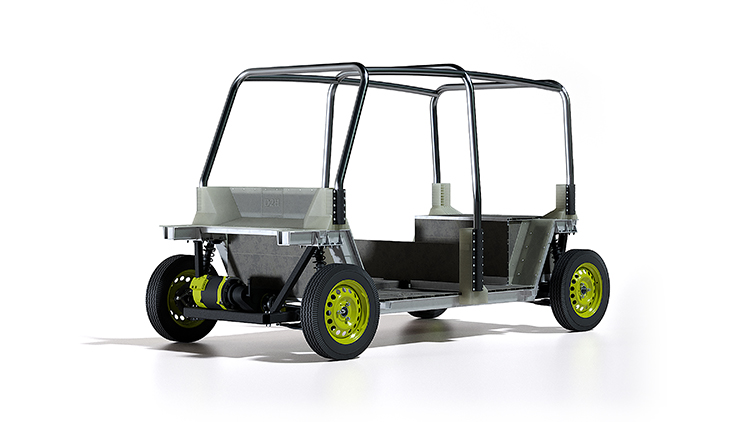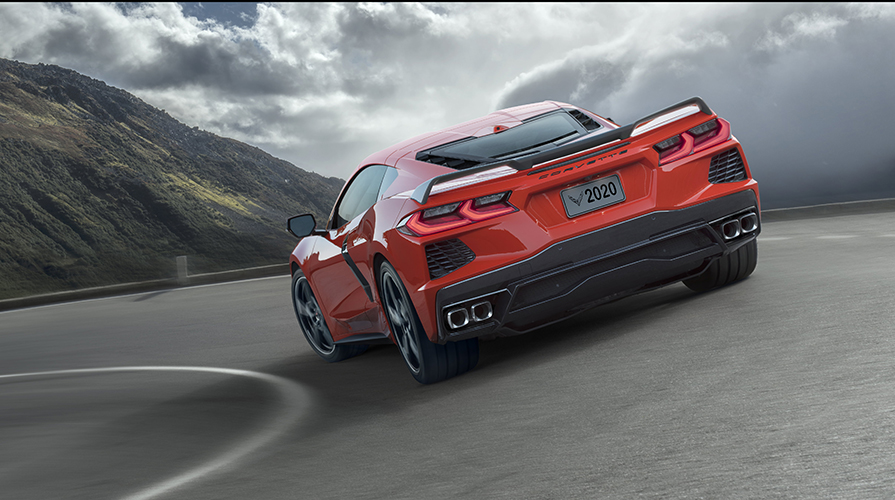

Composites Contribute to Cost-Efficient Utility Vehicle
While D2H Advanced Technologies Ltd., Buckingham, U.K., has expertise in sophisticated vehicle design from Formula One to NASCAR Cup Series cars, the company’s latest project drove it in a different direction. The advanced engineering firm designed a composite chassis for low-cost, zero-emission utility vehicles. Commonly called “tuk-tuks,” the auto rickshaws are geared toward customers in Southeast Asia, South America and Africa.
D2H obtained a grant from Innovate UK’s 15th Integrated Delivery Programme (IDP 15) funding competition, which was established to accelerate the transition to zero-emission vehicles. “The vast majority of electric vehicle development takes place at the high end with North American or European markets in mind,” says Matthew Hicks, engineering director, D2H Advanced Technologies. “Yet there is a volume market in places such as Southeast Asia for inexpensive motorized delivery and utility vehicles that is not getting a high degree of focus.”
The engineers at D2H had an idea for a utility vehicle that would operate in high temperatures, meet zero-emission goals and enable low-cost, local manufacturing processes that are simple to use and are environmentally responsible. “The profit margins are smaller for a tuk-tuk. At the same time, we can have a much more significant impact on pollution in areas such New Delhi, India, with a low-emissions vehicle,” says Hicks.
In 2019, the team partnered with Coventive Composites and Warwick Manufacturing Group (WMG), an academic department of the University of Warwick that brings together academia and the private sector to further innovation.
The tuk-tuk chassis utilizes jute and polypropylene composite material supplied by Coventive for the panels. The company has developed a process and product that commingles thermoplastics and natural fibers as an alternative to glass-based long-fiber thermoplastic (LFT) composites. The foray into jute fiber is a new direction for the company. According to Chris Hare, technology manager at Coventive, long-fiber reinforcement provides better load distribution than, for example, short fiber, glass-filled nylon. A proprietary variation of pultrusion produces the pelletized material.
“We worked hard to achieve equivalent pricing to a glass-based long-fiber composite. The jute-based composite reaches about 80 to 90 percent of the specific stiffness properties of a glass-based LFT composite, with the jute offering a very cost-effective option over flax,” says Hare. “There is no point in making a sustainable but very expensive material for this application.”
When compared to metal alternatives, the jute-reinforced thermoplastic has reduced manufacturing cycle times and energy requirements and allows detailed molding so the parts typically require less post-processing. The jute fibers are lighter weight than glass and more sustainable, as they can be recycled. “We saw an interesting synergy for using a jute-based composite where jute is readily available, such as Southeast Asia and other parts of the world that this vehicle is targeting,” says Hare. “Jute sits in the sweet spot of affordability, availability and performance.”
Polypropylene thermoplastic material was selected for several reasons. “We needed a polymer that matched the temperature limits of natural fiber so that the fibers do not degrade during processing. Polypropylene has a low-melt profile in the 375 F region. It is also affordable and available in the target markets,” Hare notes.
At this stage of the project, D2H is evaluating production processes for the tuk-tuk chassis. “The main challenge is to manufacture the chassis simply and cheaply with conventional manufacturing processes to open supply options as much as possible,” says Hicks. “We’re looking at how might we quickly train partners in these geographic markets to produce parts to widen the scope of distribution.”
Possible production methods include extrusion and compression molding, the latter of which would allow for volumes in the tens of thousands with relatively low-cost tooling, says Hicks. “Eventually, should volumes reach hundreds of thousands, the process can easily transfer to injection molding,” he adds.
Some of the tooling for the chassis has been built, and WMG is ready to perform trial production. However, the COVID-19 pandemic has complicated this phase of the project.
The chassis design meets the L7e heavy quadricycle European Union vehicle classification, so it is exempt from crash test assessment, but the goal is to raise the bar for safety performance in its price sector, according to Hicks. Currently, the chassis is paired with proprietary suspension, brakes and steering from a current vehicle, with front-wheel drive, a front-mounted motor and battery packs stored between the rear wheels. The vehicle weight is 1,058 pounds. “We envision power and cooling sufficient for 12 hours of continuous use,” says Hicks.
For commercialization, Hicks says the company requires an industry partner such as a Tier 1 or OEM for the power train, energy storage and body panel development. In addition, to break into local markets such as India, D2H will seek domestic partners to fully understand local use and demand criteria.
For Coventive, the tuk-tuk provides an opportunity to showcase the jute fiber and polypropylene matrix. “It is interesting for us to see how others might use this material,” says Hare. The project could help Coventive to build relationships in India or Bangladesh, for example, for jute supply chain possibilities, then transfer its technology to those partners for licensing.
The goal now is to produce a running prototype as soon as possible. “There is nothing quite like having a vehicle to inspire potential partners,” says Hicks.

SUBSCRIBE TO CM MAGAZINE
Composites Manufacturing Magazine is the official publication of the American Composites Manufacturers Association. Subscribe to get a free annual subscription to Composites Manufacturing Magazine and receive composites industry insights you can’t get anywhere else.




